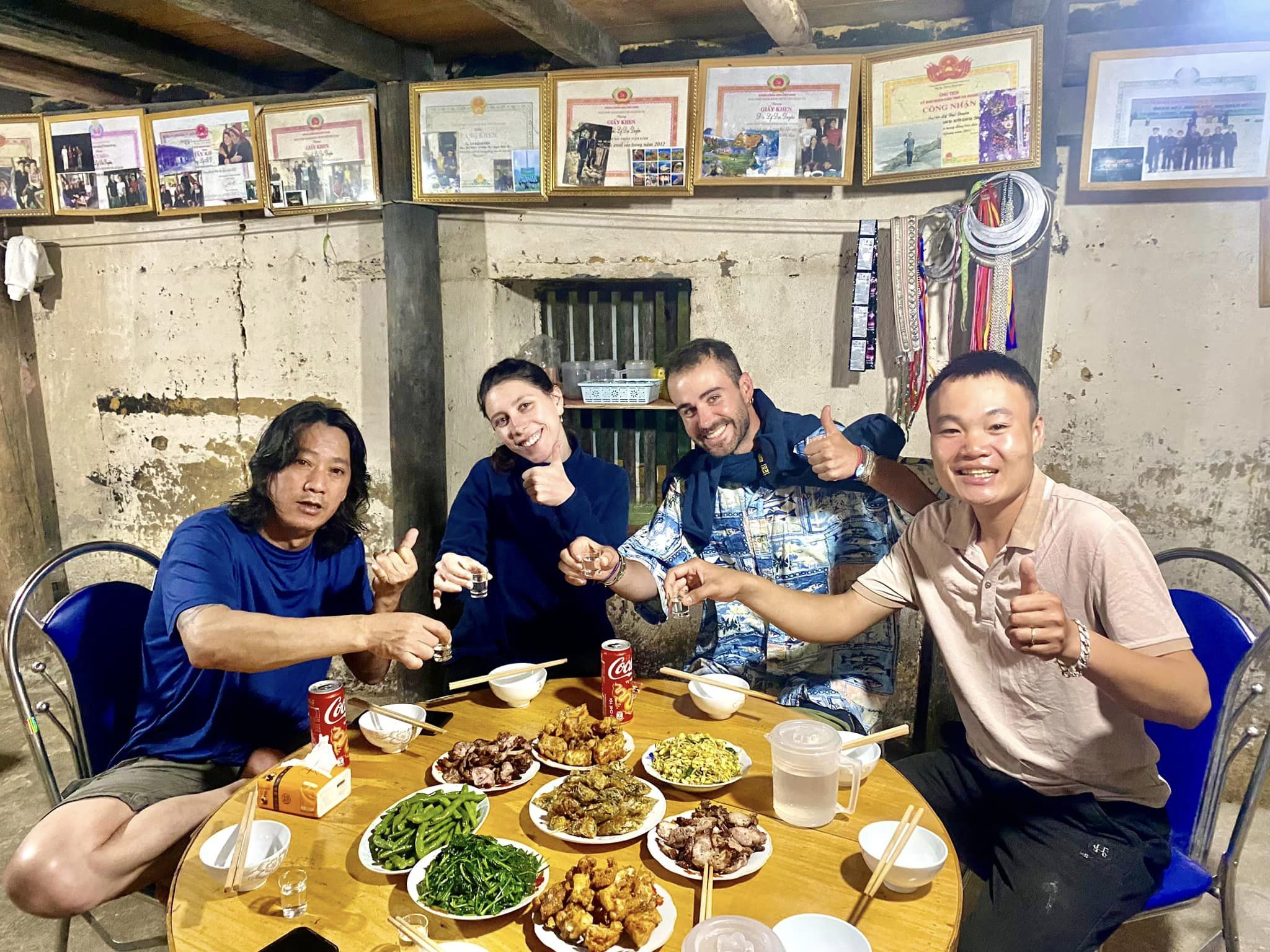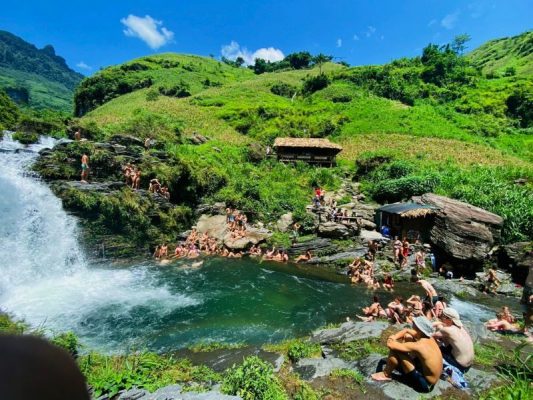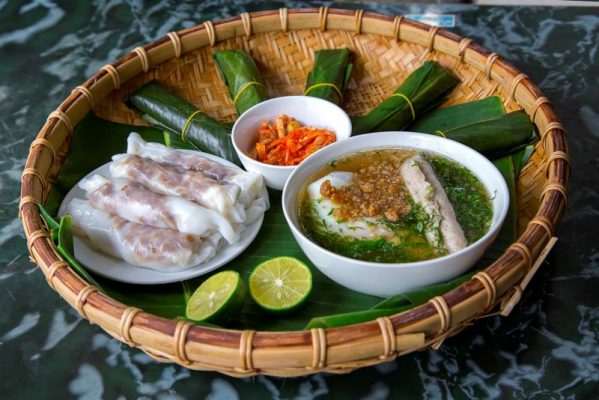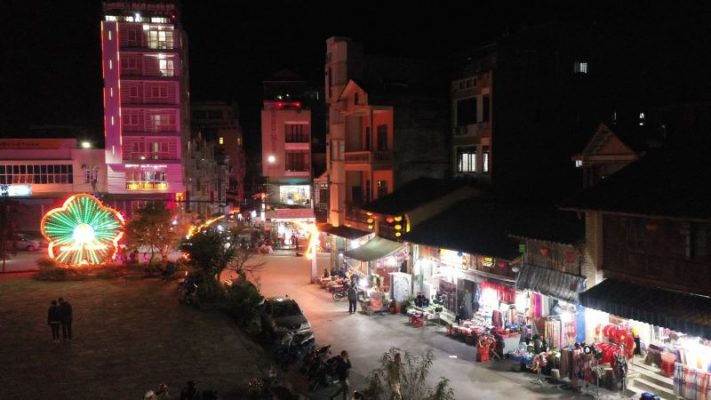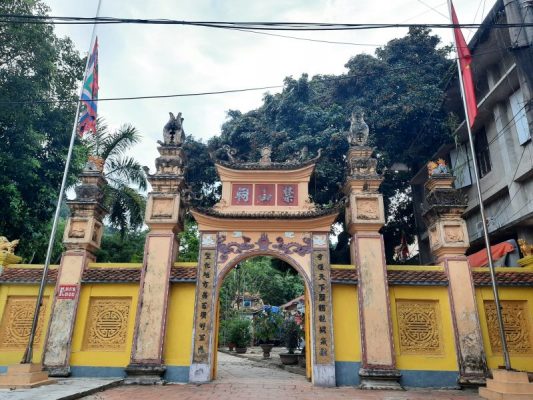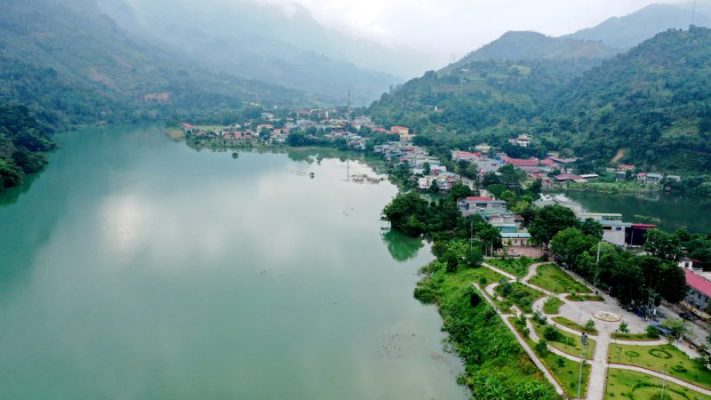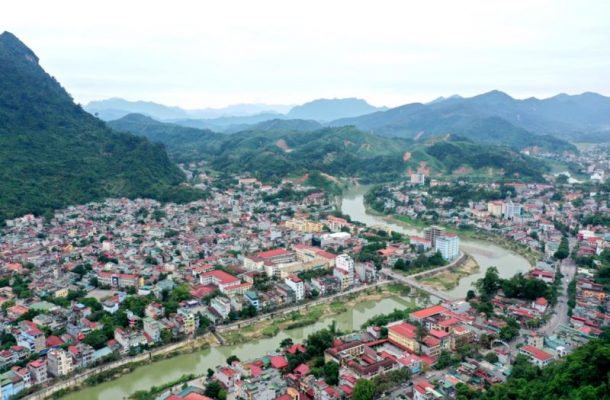The Ha Giang Loop Food Tour will give visitors a different perspective on Ha Giang. A land with special dishes, associated with the distinct culture of ethnic minorities. Let’s explore what to eat in Ha Giang in 1 day with Ha Giang Motorbike Tours!
What is special about Ha Giang cuisine?
Hà Giang Loop is one of Vietnam’s most famous tourist destinations, attracting millions of international visitors each year. When visiting Hà Giang, you’ll not only be captivated by the beautiful landscapes and unique culture but also by the rich cuisine. The cuisine of Hà Giang is deeply infused with the flavors of the mountains and forests, representing a delicate blend of nature and the culture of the ethnic minority groups. Each dish carries its own story and cultural significance.
The dishes in Hà Giang are made from natural ingredients, produced by the local ethnic people, and combined with the region’s distinctive spices, creating delicious and unique flavors.
Visitors can embark on a one-day Hà Giang Loop Food Tour, starting from the Dong Van market, then heading to Mèo Vạc, and finishing with dinner at a local home. The food in Hà Giang is also very affordable; with just 10-20 USD, you can eat well for the entire day.

List of 10 best dishes in Ha Giang
If you have the opportunity to join the Ha Giang Loop Food Tour, you should definitely try the following top 10 dishes. They are all famous dishes, loved by tourists.
Thịt trâu gác bếp
Smoked buffalo meat can be considered the most popular and famous dish of the mountainous regions of Hà Giang and the Northwest of Vietnam. This dish is often chosen by tourists as a gift because it can be preserved for a long time, from 6 months to a year, and the more you eat it, the more addictive it becomes.
Smoked buffalo meat is mainly made from buffalo, beef, or pork. The meat is then marinated with spices like chili, ginger, and mắc khén (a type of wild pepper), skewered into long pieces, and hung above the kitchen’s fireplace. The locals use lychee wood to smoke the meat from below, speeding up the drying process. The meat dries out after 2-3 days, resembling beef jerky but with a unique, richer flavor. You’ll taste the sweetness when eating it, and the more you eat, the more you enjoy it, making it hard to stop.

Thắng cố
Thắng cố is a popular dish that many tourists love when visiting Hà Giang. The main ingredients used to prepare this dish are the meat and internal organs of beef or horse. After being cleaned, they are stir-fried with familiar spices like ginger, lemongrass, and chili to absorb the flavors. Then, they are simmered for many hours until tender.
There are many restaurants in Hà Giang that serve thắng cố. However, to enjoy the best version of this dish, you should visit the Đồng Văn Market. As soon as you step through the market gate, you’ll catch the familiar, rich aroma of the spices. Thắng cố is often paired with rượu ngô, a traditional corn wine that is fermented from corn kernels. On a cold day, just a bowl of thắng cố and one or two glasses of rượu ngô, while listening to the Hmong people share their historical stories, will make you feel content.

Cơm lam
If you’re still unsure about what to eat when visiting Hà Giang, you must try Bắc Mê bamboo-tube rice, a specialty of the Northwest mountains that’s loved by many travelers. The ingredients and preparation for this dish are simple, but this simplicity makes it even more delicious and special. Bamboo-tube rice is made from sticky rice and regular rice, soaked and mixed together in a specific ratio. The mixture is then placed inside a small, hollow bamboo tube with a bit of coconut water added. The tube is sealed with fresh banana leaves and grilled over a low fire for an hour. If you’re hungry and get to enjoy hot, fragrant bamboo-tube rice with the aroma of rice and coconut water, dipped in a bit of sesame salt, it’s an unmatched experience.
This dish is served on the menu at most restaurants in Hà Giang. Additionally, you can also enjoy it at local homes or make it yourself during camping trips.

Bánh tam giác mạch
Buckwheat cake is a quite famous snack in Hà Giang. This treat is usually made at the end of winter when the buckwheat seeds are ripe. The cake has a mildly sweet taste, with a crispy and soft texture, full of the flavors of nature. There’s nothing better than strolling around Hà Giang while holding a buckwheat cake in your hand. Buckwheat cakes are also quite affordable, costing only about 0.5 USD each, and you can find them at major markets like Đồng Văn and Mèo Vạc.
You can register to join Ha Giang loop 5 days itinerary explore rural Vietnam us to explore Ha Giang cuisine for 1 day.

Phở chua Hà Giang
Sour pho in Hà Giang is a bit different from other pho dishes in Hanoi. This dish originated from China and has been adapted by the local ethnic communities. Unlike Hanoi’s pho, the rice used in sour pho is fermented and ground into small particles. The pho noodles are chewy, soft, and pure white.
The key element is the broth, which has a slightly sweet taste made from sugar and rice vinegar, with a bit of arrowroot powder added for thickness. Sour pho can also be served with beef or black chicken, along with some aromatic herbs and a sprinkle of pepper.
Rượu ngô men lá
Corn leaf wine is known as the traditional drink of the Hmong people. This wine is made from native corn, combined with the traditional leaf yeast of the Hmong, creating a sweet, mild flavor with the fragrant aroma of corn.
When you drink it, you’ll feel pleasantly tipsy but without any fatigue. You can drink it one day and still go to work the next day without any headaches or discomfort. The price for a jar of corn leaf wine ranges from 3 to 5 USD.

Cháo ấu tẩu
Porridge made from “ấu tẩu” can be considered a popular breakfast dish for everyone visiting Hà Giang. This dish is suitable for all ages, including both adults and children. Unlike regular porridge made from rice, “ấu tẩu” porridge is made from the “ấu tẩu” root, which grows abundantly in the mountainous areas of Hà Giang.
“ấu tẩu” porridge is usually cooked with bone broth, a bit of minced meat, and served with fresh herbs, a sprinkle of pepper, and green onions, creating a delicious and nutritious dish. It is best enjoyed while still hot.

Bánh cuốn trứng
Egg rice rolls in Hà Giang have a flavor quite similar to those in Hanoi. This dish is often chosen as a breakfast or light meal. The rice batter is steamed over a pot of boiling water, with an egg added in the middle. The rice rolls are usually served with bone broth, sprinkled with a bit of fried shallots and herbs on the side.
Eating egg rice rolls while they’re still hot gives you a unique taste—the rich, creamy yolk wrapped in a chewy outer layer of rice roll, along with the fluffy texture of the egg white. Dipping it in the bone broth during cold weather is simply unbeatable. This is a dish you must try on your Hà Giang Loop Food Tour.
Xôi ngũ sắc
Five-colored sticky rice is not just an ordinary dish; it is also a traditional feature in the culture of the Tày ethnic group. The main ingredient is high-quality upland sticky rice. The Tày people carefully select each ripe, golden grain, letting it dry naturally under the eaves. Then, the husks are removed to reveal large, round, translucent white grains. The rice is soaked in water mixed with different natural ingredients like camellia leaves, pandan leaves, and turmeric to create five colors. After soaking for about 12 hours, the rice is steamed over medium heat until cooked. The result is a dish that is both delicious and visually appealing.
Five-colored sticky rice is typically served during festivals, New Year celebrations, or when the Tày people host important guests. However, this dish is becoming increasingly popular in restaurants in Hà Giang.

Thịt chuột La Chí
Five-colored sticky rice is not just an ordinary dish; it is also a traditional feature in the culture of the Tày ethnic group. The main ingredient is high-quality upland sticky rice. The Tày people carefully select each ripe, golden grain, letting it dry naturally under the eaves. Then, the husks are removed to reveal large, round, translucent white grains. The rice is soaked in water mixed with different natural ingredients like camellia leaves, pandan leaves, and turmeric to create five colors. After soaking for about 12 hours, the rice is steamed over medium heat until cooked. The result is a dish that is both delicious and visually appealing.
Five-colored sticky rice is typically served during festivals, New Year celebrations, or when the Tày people host important guests. However, this dish is becoming increasingly popular in restaurants in Hà Giang.

Notes when doing Ha Giang Loop Food Tour
The Ha Giang Loop Food Tour is a simple and quick way to explore Ha Giang’s cuisine. To make your trip more complete, Meditours would like to share a few tips:
- You should enjoy Ha Giang’s seasonal dishes. For example, buckwheat cakes are best from October to November.
- Choose reputable and clean restaurants to ensure that the food is prepared carefully and meets food safety standards.
- Since Ha Giang’s climate is cold and quite dry, make sure to drink plenty of water to avoid dehydration.
- Avoid eating too much of one dish; try a little of each dish to experience more of the local cuisine.
- Ask for the price of dishes beforehand to avoid being overcharged.
- If you’re traveling alone or unfamiliar with the area, consider joining a tour to be guided to attractive dining spots and ensure your safety.
See more: Best Time to Visit Ha Giang Weather & Traveling Tips

These are Meditours Ha Giang‘s tips for a day exploring the Ha Giang Loop Food Tour. We hope this article provides useful information to make your trip more enjoyable.

